If you’re a photographer, there’s one place in Colorado that you simply must photograph, and if you’re a hiker, there’s one place in Colorado that you simply must hike. The Maroon Bells Wilderness is the iconic scene of the Colorado Rocky Mountains, and if you leave the state without spending one morning here, you really have missed out.
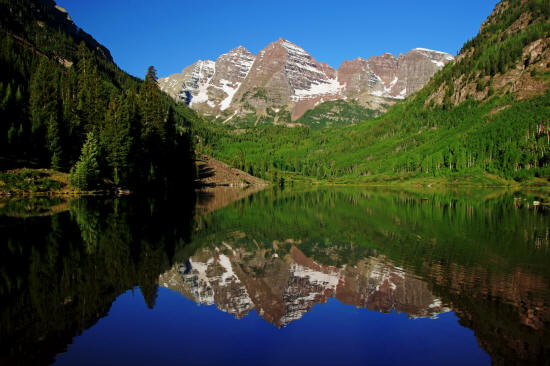
The Maroon Bells Wilderness is located about 10 miles southwest of Aspen, down a winding 2-lane road that follows Maroon Creek into the most perfect valley you’ll ever lay eyes on. It’s such a big attraction, that there are tight restrictions on how you can get here.
I decided to arrive as early as possible, in order to capture the perfect light that hits the Bells just after sunrise. The crack of dawn is also the best time to find a glassy, perfectly-still surface on Maroon Lake, which is essential to capturing this iconic photograph.
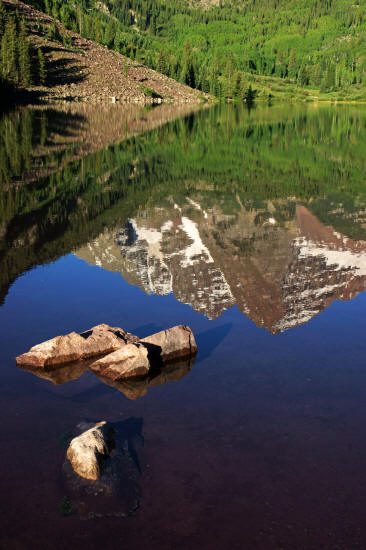
So let’s assume that you want to take really great pictures, so you’ve managed to get out of bed before daybreak, bundle up, and drive out to the lake. If you’re blessed, you’ll have gorgeous blue skies above you, and as you stand at the edge of Maroon Lake, the sun will be at your back. You’ll see that perfect reflection on the water, and you won’t believe your eyes.
Photographing it, however, is tricky. Once I got home, I realized that I hadn’t taken any perfect pictures. Every little flaw is very noticeable, when you’re shooting a scene that you’ve already seen photographed a thousand times.
One problem: with the sun at your back, you’ll be casting a long shadow, and unless you position yourself exactly right, your shadow will end up on the water.
Another challenge: ducks. The wind may not be forming any ripples on the lake, but the wildlife will be. Notice the ripples in the photo at the top of this page? I didn’t see them when I was taking the picture, but I sure did notice them once I got home.
Time will quickly pass, and the best light will soon be gone, so you need to know exactly where to go. After I shot a few photos at the edge of the lake near the parking lot, I decided to try my luck by walking further up the shore.
I discovered that there really isn’t any better location for capturing a perfect reflection, than the one you find near the parking lot. The further up you go, the less water you have to work with. And, it’s tough to get the reflection in the right place, and avoid any weeds or land that tries to intrude on your picture.
Near the upper end (west end) of the lake, you’ll have a good view of Pyramid Peak, elevation 14,018 feet. The reflection in the water isn’t great.
At the upper end of Maroon Lake, you can cross a footbridge, and you’ll see this sign announcing the Maroon Bells Snowmass Wilderness, part of White River National Forest. This is the start of a loop trail that travels up one side of Maroon Creek, then down the other side.
The water is moving fast here, so don’t count on any good reflections.
The trail, for the most part, stays covered by aspen trees. Only occasionally will a view of the Bells break through.
There is a waterfall to enjoy here, about halfway up the loop trail. It’s near a bridge, where you can make a shortcut to the other side of the loop.
This hike is a wonderfully relaxing stroll through tall, shimmering aspen trees. I can only imagine how beautiful it must be in the fall, when these leaves turn to gold.
Near the western end of the loop, at the point where it makes a U-turn and heads back towards Maroon Lake, I suddenly stopped. Something very big caught my eye. Yes, big and alive. Could it be a bear? It certainly could be. I’d suspect that bears show up in this area from time to time — and I was only the first or second person on the trail that day, so there was no one else who would have scared them off. I peered through the trees, and snapped the picture you see above. Can you see it? It was too big to be a bear. It was more like the size of a large cow. A cow? Out here? Maybe a horse, but that didn’t make much sense either.
After a few seconds, it made a move, away from me, disappearing into the thick forest. It was about that time that I realized it was a moose. I’ve only seen a moose a couple of times before, but never this close. Wow.
The rest of the loop was even more enjoyable, now that I knew I had a close encounter with something wild. I enjoyed the mountains…
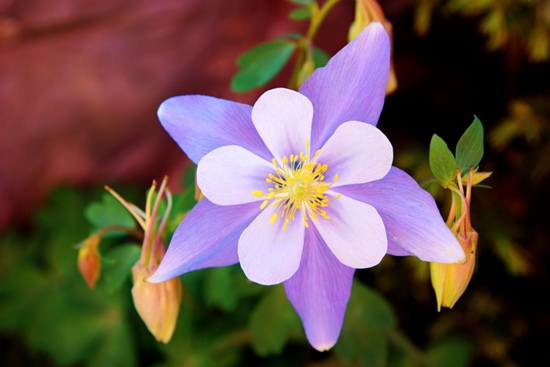
… and the flowers.
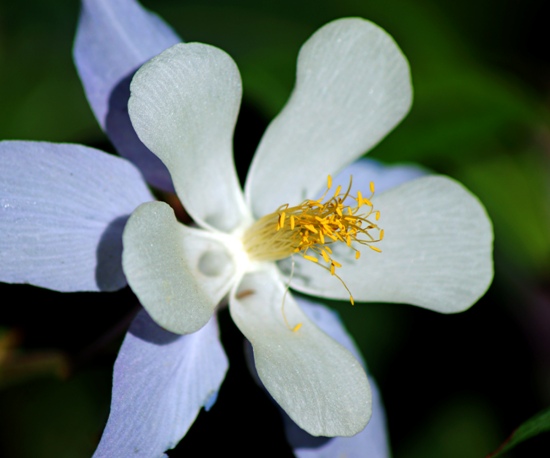
These are Columbines, Colorado’s state flower.
Another brief clearing gave me another glimpse of the famous peaks…
… and I wasn’t the only one enjoying the view.
This marmot scampered around me for a few moments.
At a wide spot in the creek, I climbed out on some rocks for this view of the mountains. There was a bit of a reflection, but I wasn’t able to line it up perfectly, without getting my feet wet.
This is the shortcut bridge, that crosses the creek near the waterfall. I stayed on the south side of the creek…
… until it returned to the western end of Maroon Lake.
Don’t forget to watch for beavers, that might be swimming around this lodge!
If you made the hike from the parking lot to the end of the scenic loop and back, you would walk about 2.5 miles. Fortunately, there’s another hiking opportunity — a trail that leads up to Crater Lake, the next lake upstream. We’ll tackle that on the next page.
After I had spent about 7 hours hiking around the Maroon Bells Wilderness (including the hike up to Crater Lake), I hobbled back to the car. Just before I reached the parking lot, I stopped for one more look at Maroon Lake. Can you believe the difference? By early afternoon, the mountains were a different color, and the lake — oh, the lake, what had happened to it? That awesome reflection was long gone. The wind had kicked up, and the surface was choppy. I felt sorry for the tourists who were just arriving. They wouldn’t get to see the amazing sight that I enjoyed, just a few hours earlier.

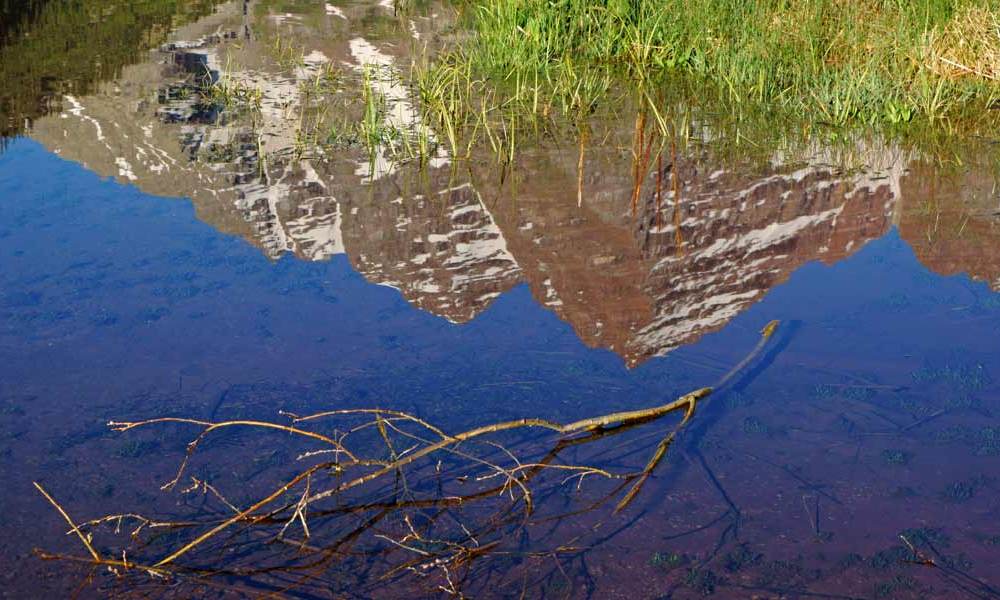
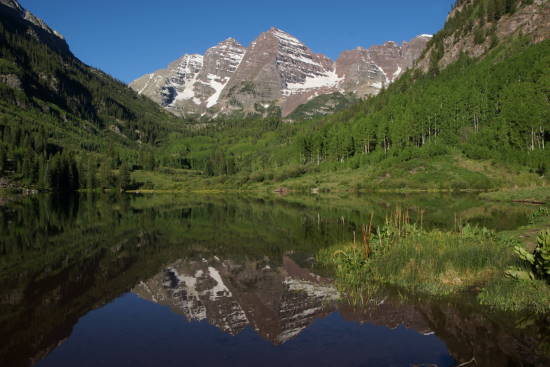
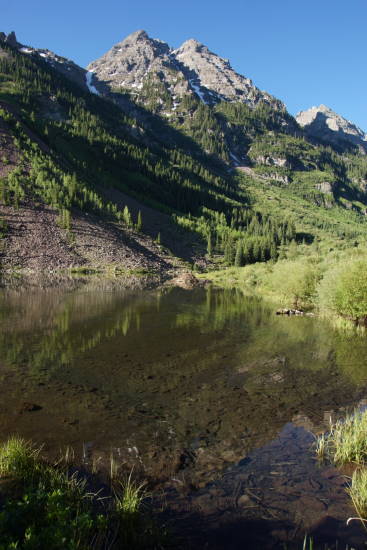
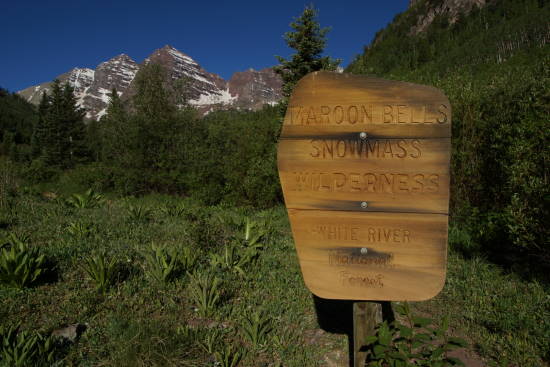
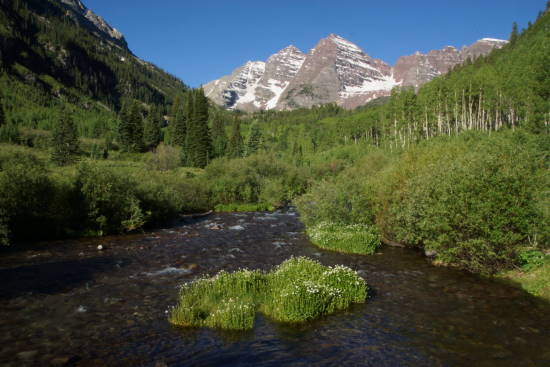
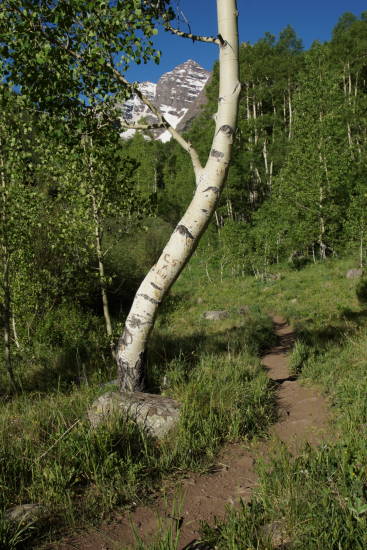
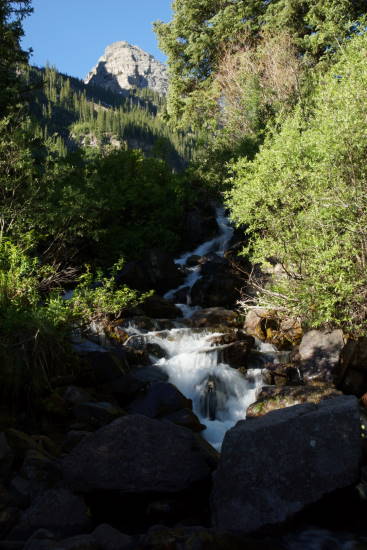
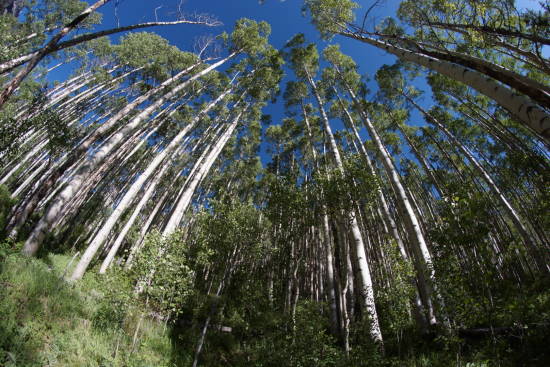
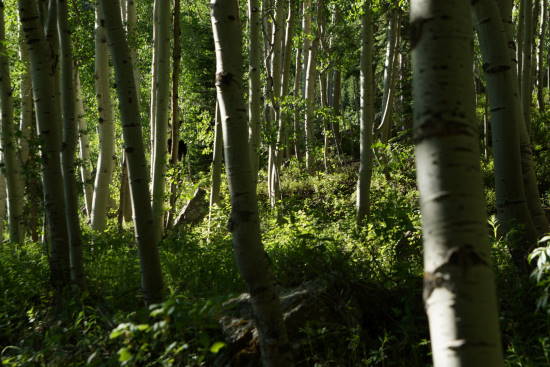
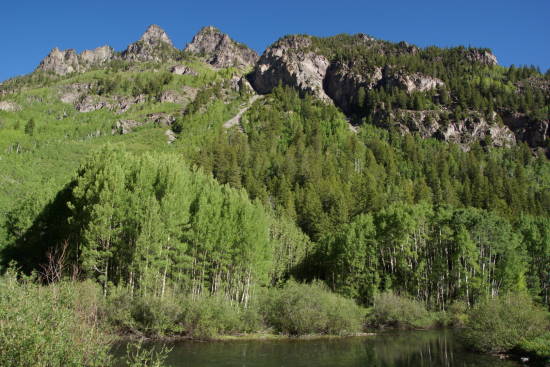
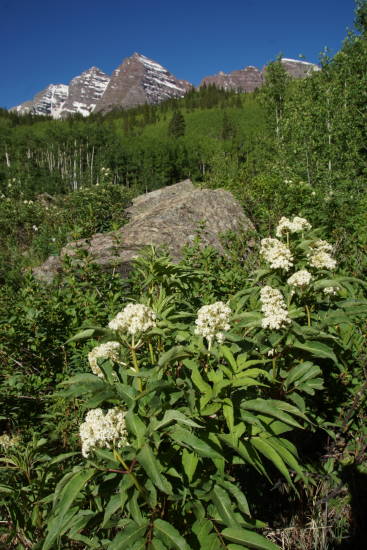
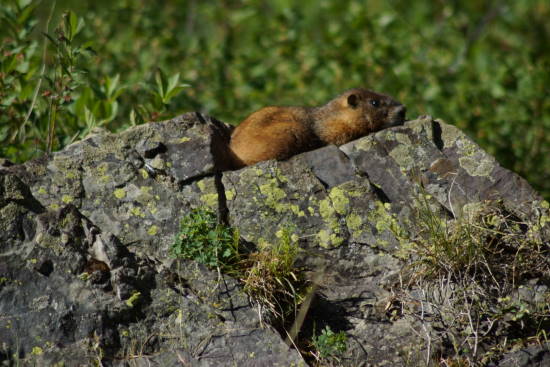
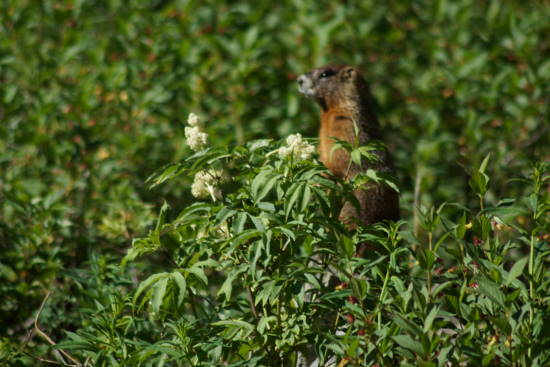
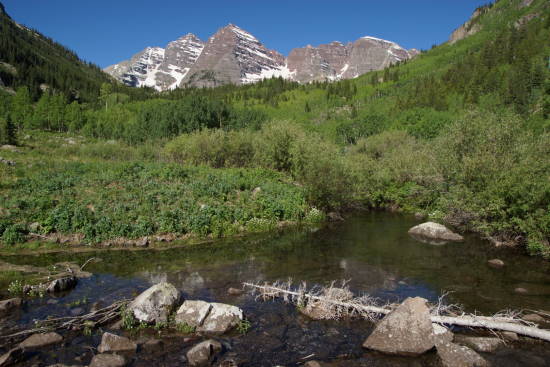
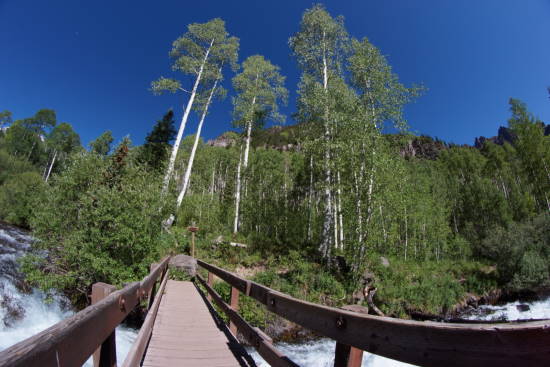
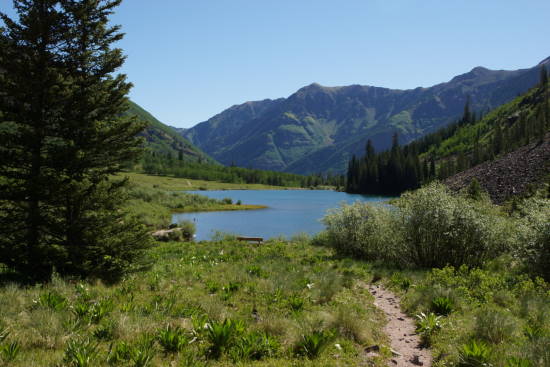
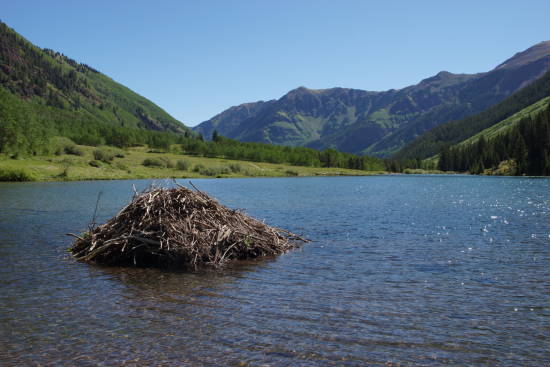
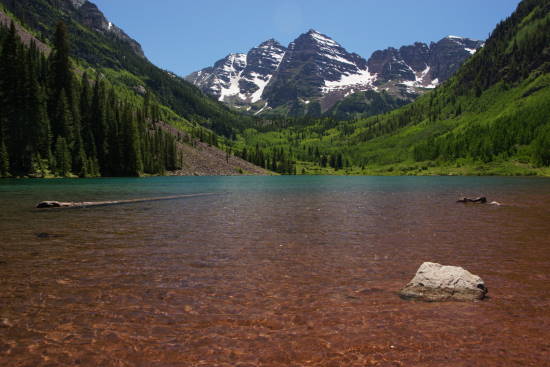
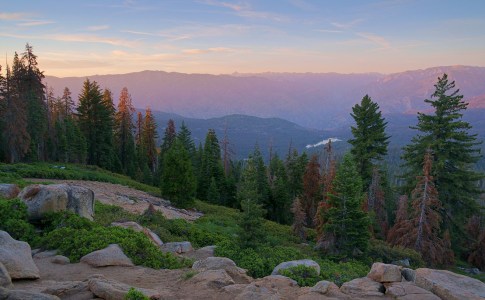
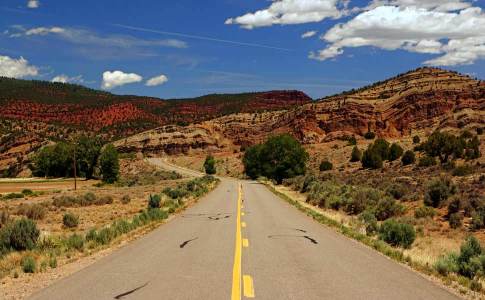
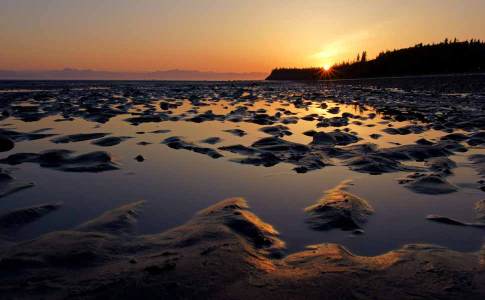
No comments